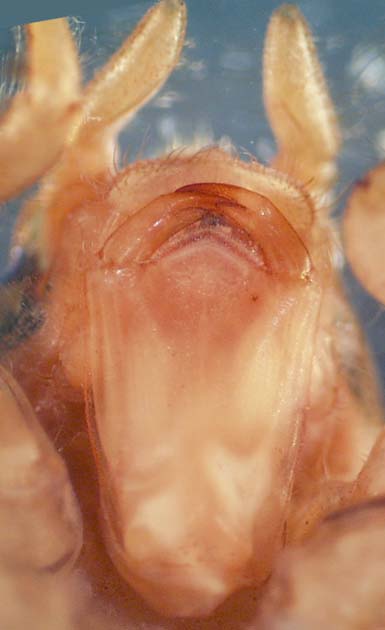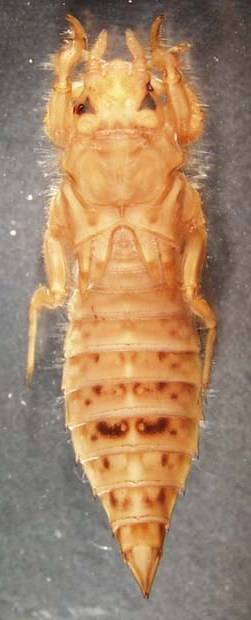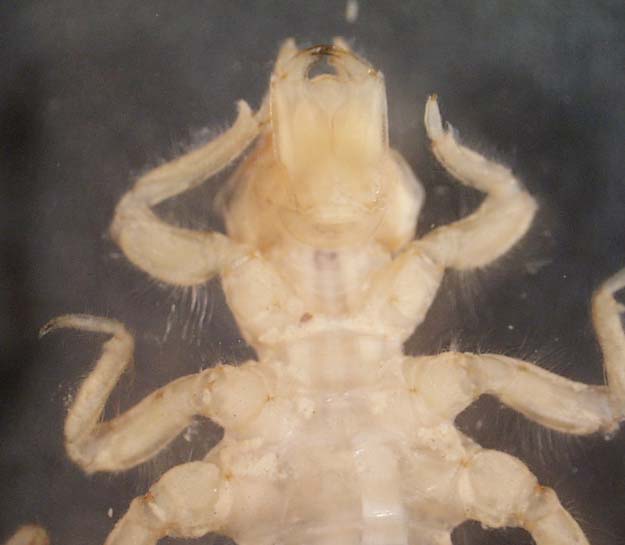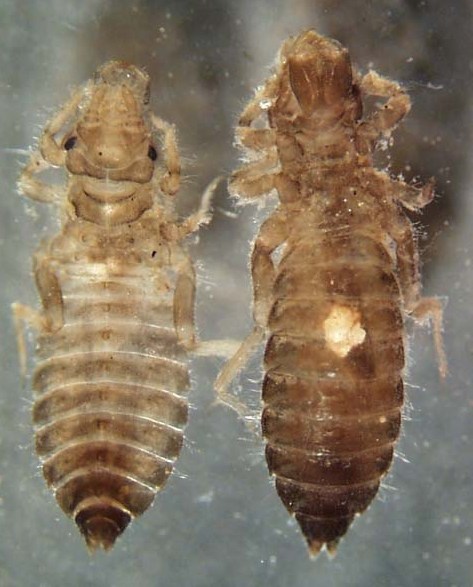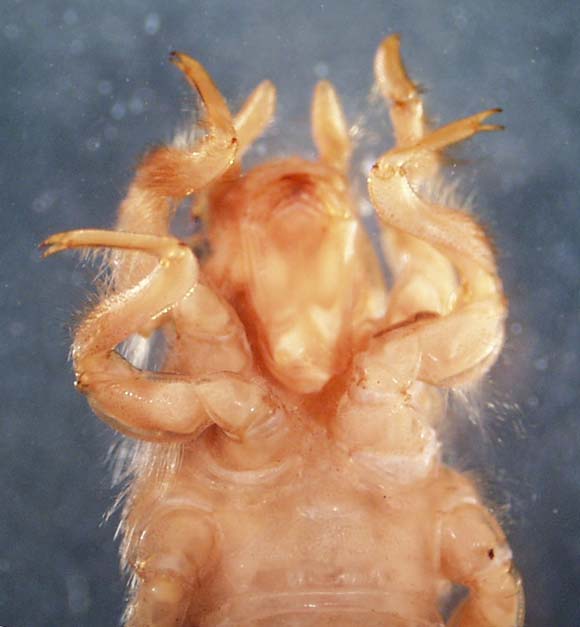
THE XERCES SOCIETY FOR INVERTEBRATE CONSERVATION Aquatic Invertebrates in Pacific Northwest Freshwater Wetlands |
| Identify taxa |
Gomphidae (clubtails) |
Clubtails can be found in pools and margins of streams and other faster flowing waters. Most are moderately tolerant. The clubtails are true burrowers and have an extra lobe near the end of their front legs (see image to the lower right) that is used for digging in gravel, sand, or silt. They bury themselves and wait for prey. Many have modifications that allow them to extend their abdomen above the burrow and continue to get dissolved oxygen from the water. Clubtails have short, thick, 4-segmented antennae. The 3rd segment of the antennae is very large, while the 4th or last segment is tiny. The labium is flat (not scoop-like). It is difficult to identify Gomphidae to genus and species. |
Size:
large to xlarge |
 |
|
© 2007 Xerces Society
Contact info@xerces.org
